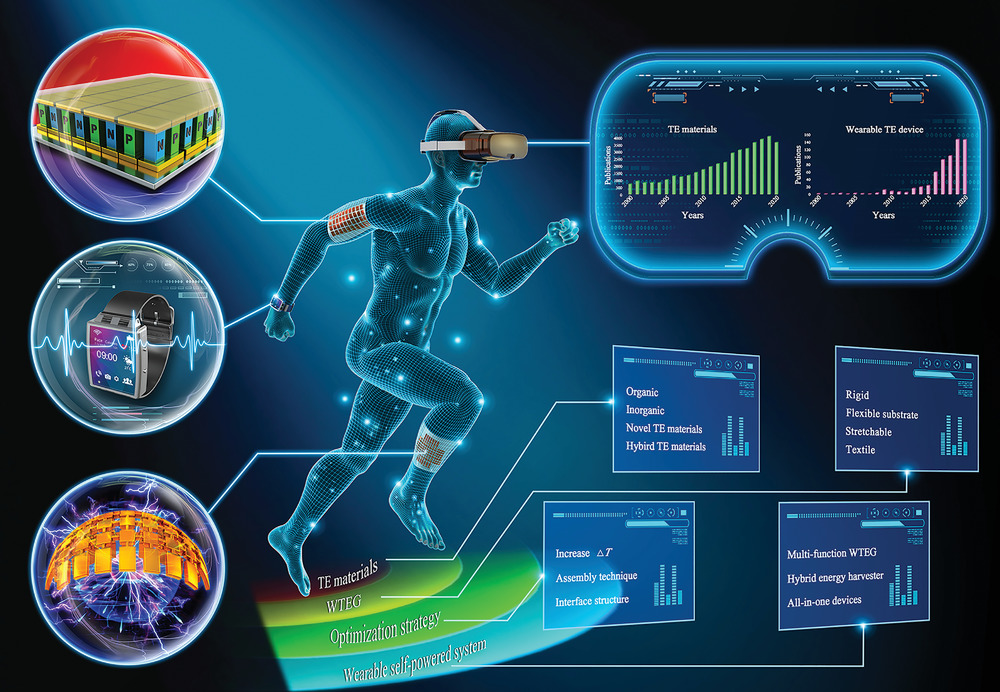Ultrananaotech, ULTRANANOTECH
Nano Structured Thermoelectric materials for Wearable devices
Introduction:
The rapid advancement of wearable technology has led to an increasing demand for sustainable and efficient power sources. Traditional batteries have limitations, such as limited lifespan, environmental concerns, and user inconvenience. Thermoelectric materials offer a promising solution by harnessing body heat to generate electricity, enabling self-sustaining wearable devices. This essay explores the potential of thermoelectric materials for wearable devices, their benefits, and future applications.Thermoelectric materials convert heat into electrical energy through the Seebeck effect.
The efficiency of thermoelectric materials is defined by by ZT = σα² ⁄ κ Where, σ is the electrical conductivity, α Seeback coefficient and κ thermal conductivity.
These materials have been widely used in various applications, including waste heat recovery, solar thermoelectric generators, and cooling systems. Recent advancements in thermoelectric materials have made them suitable for wearable devices. Flexible and wearable thermoelectric materials, such as bismuth telluride and antimony telluride, can be integrated into wearable devices, enabling energy harvesting from body heat.
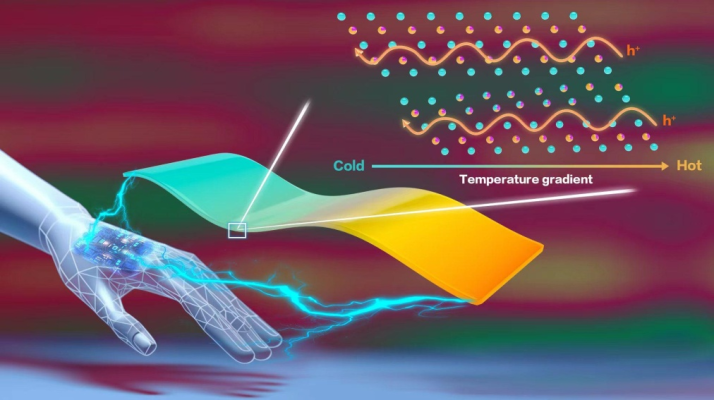
Fig.1: Thermoelectric materials: Heat into electrical energy: Seebeck effect
Materials Requirements:
- Flexibility: Thermoelectric materials for wearable devices should be flexible and conformable to the human body.
- Lightweight: Thermoelectric materials for wearable devices should be lightweight to minimize user discomfort.
- High efficiency: Thermoelectric materials for wearable devices should have high efficiency to generate sufficient power from body heat.
- The efficiency of thermoelectric materials is defined by ZT= σα²⁄ κ
- Biocompatibility: Thermoelectric materials for wearable devices should be biocompatible to ensure user safety.
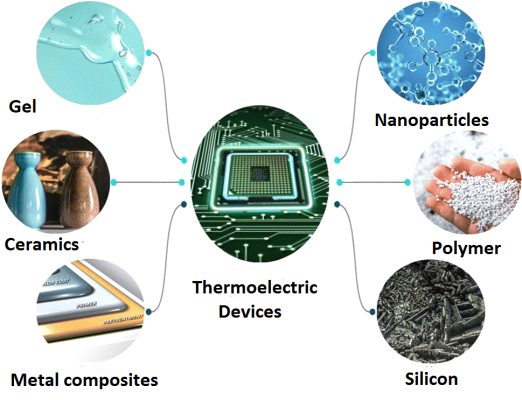
Fig 2: Materials used in thermoelectric devices
Key Materials Properties requirement for a good thermoelectric power generator:
- Seebeck coefficient: A measure of a material’s ability to generate an electric potential difference in response to a temperature difference.
- Electrical conductivity: A measure of a material’s ability to conduct electricity.
- Thermal conductivity: A measure of a material’s ability to conduct heat.
- Figure of merit (ZT): ZT = σα²⁄κ, A measure of a material’s thermoelectric performance, taking into account its Seebeck coefficient, electrical conductivity, and thermal conductivity.
Traditional Thermoelectric Materials for room temperature power generation:
- Bismuth telluride (Bi2Te3): A popular thermoelectric material used in many applications.
- Antimony telluride (Sb2Te3): Another widely used thermoelectric material.
- Nanomaterials: Nanomaterialssuch as nanoparticles (Bismuth telluride and Antimony telluride) and nanowires, can be used to enhance thermoelectric performance.
Advanced Thermoelectric Materials for high temperature applications:
- Skutterudites: A class of materials with potential for high-performance thermoelectric applications.
- Lead telluride (PbTe): A thermoelectric material used in high-temperature applications.
- Silicon germanium (SiGe): A thermoelectric material used in high-temperature applications.
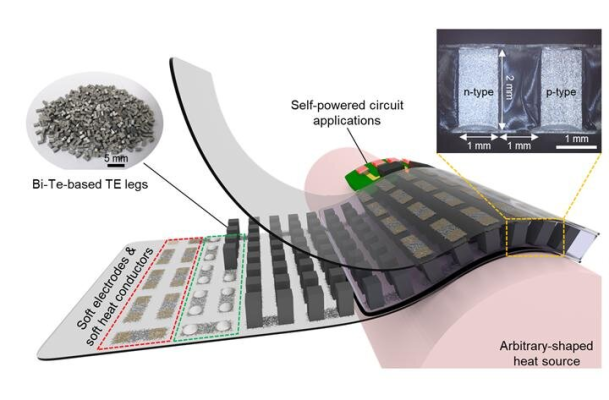
Fig 3: Conceptual illustration of compliant thermoelectric generators (TEG) with soft electrodes and soft heat conductors
Applications:
Energy Harvesting
- Body heat harvesting: Thermoelectric materials can be used to harvest energy from body heat, powering wearable devices.
- Self-sustaining wearables: Thermoelectric materials can enable self-sustaining wearables, reducing the need for batteries.
Powering Wearable Devices
- Smartwatches and fitness trackers: Thermoelectric materials can be used to power smartwatches and fitness trackers.
- Wearable sensors: Thermoelectric materials can be used to power wearable sensors, such as temperature and humidity sensors.
- Hearing aids and earbuds: Thermoelectric materials can be used to power hearing aids and earbuds.
Enhancing Wearable Device Performance using thermoelectric power generator:
- Improved battery life: Thermoelectric materials can improve battery life by harvesting energy from body heat.
- Increased functionality: Thermoelectric materials can enable additional features and functionality in wearable devices.
- Reduced size and weight: Thermoelectric materials can enable smaller and lighter wearable devices.
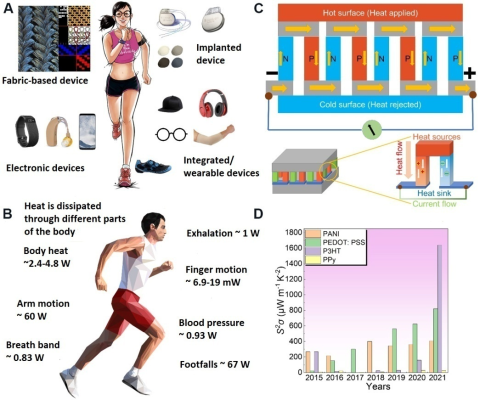
Fig 4: Application of thermoelectric devices
Benefits
- Convenience: Thermoelectric materials can enable wearable devices that are more convenient to use and maintain.
- Sustainability: Thermoelectric materials can enable wearable devices that are more sustainable and environmentally friendly.
- Improved user experience: Thermoelectric materials can improve the user experience by enabling wearable devices that are more comfortable, convenient, and functional.
Conclusion
Nanostructured thermoelectric materials have shown great promise for wearable device applications, offering a potential solution for energy harvesting and powering wearable electronics. These materials can convert body heat into electrical energy, enabling the development of self-powered wearable devices. The basic ZT values for thermoelectric material are around 1-1.2. Recent research treads are going to develop to enhance the ZT value up to 2.0 or higher for getting higher performance from nanostructured thermoelectric materials.
Courtesy:
Dr. Shubhadeep Maity
Ultrananotech Private Limited , Bangalore
 +91-8800903073, 8452810712
+91-8800903073, 8452810712
